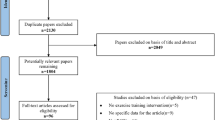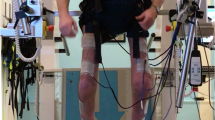Abstract
Several studies have shown relationships between growth in early life and adult bone mass; in this article, we evaluate the relative contributions of pre- and postnatal factors to bone mass in the seventh decade. A total of 498 eight men and 468 women who were born in Hertfordshire during the period 1931–1939 and still living there were recruited. Detailed birth records were available. Participants attended a clinic where they completed a detailed health questionnaire, before performance of anthropometric measurements and bone densitometry of the proximal femur and lumbar spine (Hologic QDR 4500). Birth weight was associated with bone mineral content in both men (proximal femur: r = 0.16, p = 0.0003; lumbar spine: r = 0.10, p = 0.03) and women (proximal femur: r = 0.16, p = 0.0008; lumbar spine: r = 0.11, p = 0.03); relationships with bone mineral density were weaker and were significant at the proximal femur in men only (p = 0.03). Relationships between weight at 1 y and bone mineral content were even stronger (proximal femur: men r = 0.22, p < 0.0001; women r = 0.14, p = 0.002). In men, 18% of the variance in proximal femoral bone area was explained by a model that included birth weight, weight at 1 y, and adult weight, with the relative contributions attributed to each being 2.8, 6.8, and 8.2%, respectively. In women, similar modeling produced figures of 6.7, 4.2, and 3.9% (overall variance of 15% in proximal femoral bone area). Hence, weight at each of these three points in the life course is important in the determination of adult bone mass, with greater contributions of earlier growth to bone size and mineral content than to bone mineral density.
Similar content being viewed by others
Log in or create a free account to read this content
Gain free access to this article, as well as selected content from this journal and more on nature.com
or
Abbreviations
- BMAD:
-
bone mineral apparent density
- BMC:
-
bone mineral content
- BMD:
-
bone mineral density
- BMI:
-
body mass index
- DEXA:
-
dual-energy x-ray absorptiometry
- HRT:
-
hormone replacement therapy
References
Cooper C, Cawley M, Bhalla A, Egger P, Ring F, Morton L, Barker D 1995 Childhood growth, physical activity and peak bone mass in women. J Bone Miner Res 10: 940–947
Cooper C, Fall C, Egger P, Hobbs R, Eastell R, Barker D 1997 Growth in infancy and bone mass in later life. Ann Rheum Dis 56: 17–21
Yarbrough DE, Barrett-Connor E, Morton DJ 2000 Birth weight as a predictor of adult bone mass in postmenopausal women; the Rancho Bernardo Study. Osteoporos Int 11: 626–630
Gale CR, Martyn CN, Kellingray S, Eastell R, Cooper C 2001 Intrauterine programming of adult body composition. J Clin Endocrinol Metab 86: 267–272
Antoniades L, MacGregor AJ, Andrew T, Spector TD 2003 Association of birth weight with osteoporosis and osteoarthritis in adult twins. Rheumatology (Oxford) 42: 791–796
Cooper C, Erikkson JG, Forsen T, Osmond C, Tuomilehto J, Barker DJ 2001 Maternal height, childhood growth and risk of hip fracture in later life: a longitudinal study. Osteoporos Int 12: 623–629
Dallosso HM, Morgan K, Bassy EJ, Ebrahim SB, Fentem PH, Arie THD 1988 Levels of customary physical activity among the old and very old living at home. J Epidemiol Community Health 42: 121–127
Carter DR, Bouxsein ML, Marcus R 1992 New approaches for interpreting projected bone densitometry data. J Bone Miner Res 7: 137–145
Cole TJ 1995 Conditional reference charts to assess weight gain in British infants. Arch Dis Child 73: 8–16
Egger P, Duggleby S, Hobbs R, Fall C, Cooper C 1996 Cigarette smoking and bone mineral density in the elderly. J Epidemiol Community Health 50: 47–50
Penrose LS 1954 Some recent trends in human genetics. Caryologia 6: 521–530
Brooks AA, Johnson MR, Steer PJ, Pawson ME, Adballa HI 1995 Birthweight: nature or nurture?. Early Hum Dev 42: 29–35
Lush JL, Hetzer HO, Culbertson CC 1934 Factors affecting birthweights of swine. Genetics 19: 329–343
Cawley RH, McKeown T, Record RG 1954 Parental stature and birthweight. Am Hum Genet 6: 448–456
Roberts DF 1986 The genetics of human growth. In: Falkner F, Tanner JM (eds) Human Growth. Plenum Press, New York, pp 113–143
Antoniades L, MacGregor AJ, Andrew T, Spector TD 2003 Association of birth weight with osteoporosis and osteoarthritis in adult twins. Rheumatology (Oxford) 42: 791–796
Theintz G, Buchs B, Rizzoli R, Shosman D, Clavien H, Sizonenko PC et al. 1992 Longitudinal monitoring of bone mass accumulation in healthy adolescents: evidence for a marked reduction after 16 years of age at the levels of lumbar spine and femoral neck in female subjects. J Clin Endocrinol Metab 75: 1060–1065
Cummings SR, Marcus R, Palermo L, Ensrud KE, Genant HK, Study of Osteoporosis Fractures Research Group 1994 Does estimating volumetric bone density of the femoral neck improve the prediction of hip fracture? A prospective study. J Bone Miner Res 9: 1429–1432
Gilsanz V, Boechat MI, Gilsanz R, Loro ML, Roe TF, Goodman WG 1994 Gender differences in vertebral sizes in adults: biomechanical implications. Radiology 190: 678–682
Bouxsein ML 2003 Bone quality: where do we go from here?. Osteoporosis Int 14( suppl 5): 118–127
Hernandez CJ, Beaupre GS, Carter DR 2003 A theoretical analysis of the relative influences of peak BMD, age-related bone loss and menopause on the development of osteoporosis. Osteoporos Int 14: 843–847
Tabensky A, Duan Y, Edmonds J, Seeman E 2001 The contribution of reduced peak accrual of bone and age-related bone loss to osteoporosis at the spine and hip: insights from the daughters of women with vertebral or hip fractures. J Bone Miner Res 16: 1101–1107
Mehta G, Roach HI, Langley-Evans S, Taylor P, Reading I, Oreffo RO, Aihie-Sayer A, Clarke NM, Cooper C 2002 Intrauterine exposure to a maternal low protein diet reduces adult bone mass and alters growth plate morphology in rats. Calcif Tissue Int 71: 493–498
Oreffo RO, Lashbrooke B, Roach HI, Clarke NM, Cooper C 2003 Maternal protein deficiency affects mesenchymal stem cell activity in the developing offspring. Bone 33: 100–107
Fall C, Hindmarsh P, Dennison E, Kellingray S, Barker D, Cooper C 1998 Programming of growth hormone secretion and bone mineral density in elderly men: a hypothesis. J Clin Endocrinol Metab 83: 135–139
Harel Z, Tannenbaum GS 1995 Long-term alterations in growth hormone and insulin secretion after temporary dietary protein restriction in early life in the rat. Pediatr Res 38: 747–753
Bishop NJ, Dahlenburg SL, Fewtrell MF, Morley R, Lucas A 1996 Early diet of preterm infants and bone mineralisation at age five years. Acta Paediatr Scand 85: 230–236
Acknowledgements
We thank the men and women who participated in the study and the nurses and radiology staff who administered the bone density measurements. Computing support was provided by Vanessa Cox, and the manuscript was prepared by Gill Strange.
Author information
Authors and Affiliations
Corresponding author
Additional information
This study was conducted with support from the Medical Research Council and Arthritis Research Campaign.
Rights and permissions
About this article
Cite this article
Dennison, E., Syddall, H., Sayer, A. et al. Birth Weight and Weight at 1 Year Are Independent Determinants of Bone Mass in the Seventh Decade: The Hertfordshire Cohort Study. Pediatr Res 57, 582–586 (2005). https://doi.org/10.1203/01.PDR.0000155754.67821.CA
Received:
Accepted:
Issue date:
DOI: https://doi.org/10.1203/01.PDR.0000155754.67821.CA
This article is cited by
-
Linear growth and relative weight gain in childhood and bone mass in adolescence: findings from the Pelotas (Brazil) 2004 birth cohort
Archives of Osteoporosis (2022)
-
Infant milk feeding and bone health in later life: findings from the Hertfordshire cohort study
Osteoporosis International (2020)
-
Socio-economic Determinants of Bone Health from Past to Present
Clinical Reviews in Bone and Mineral Metabolism (2019)
-
Breech presentation is associated with lower adolescent tibial bone strength
Osteoporosis International (2019)
-
Longitudinal Change in Peripheral Quantitative Computed Tomography Assessment in Older Adults: The Hertfordshire Cohort Study
Calcified Tissue International (2018)



